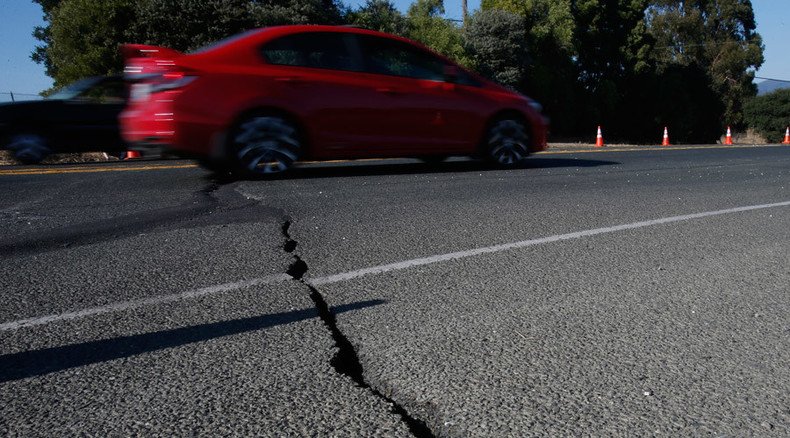99.9% chance of ‘big’ L.A. earthquake soon? Why NASA and USGS can’t shake on it

When NASA’s Jet Propulsion Laboratory determined a 99.9 percent likelihood for a magnitude 5.0 earthquake or higher within Los Angeles before April 2018, the US Geological Survey stepped in saying NASA wasn’t “clear” about the science behind its finding.
There will be an earthquake in Los Angeles – that much is certain – although it’s impossible to be certain about exactly when, where, and how powerful it will be. However, using methods doubted by some seismologists, scientists at NASA’s Jet Propulsion Laboratory (JPL) seem to be convinced that they have a pretty good idea. On October 7, the peer-reviewed Earth and Space Science journal published the group’s shocking findings.
Scientists solve mystery of 'Precariously Balanced Rocks' in earthquake-prone California http://t.co/hD2tklufF7pic.twitter.com/ezLeG15sfR
— RT America (@RT_America) August 13, 2015JPL based its incredible 99.9 percent figure on previous quakes, including last year’s M5.1 earthquake in La Habra, located 21 miles east of Los Angeles; GPS data, and aerial radar. The USGS, using what it considers the true scientific process, swooped in to more or less correct the record with their own figure – an 85 percent likelihood of such an event.
“As scientists, we were not putting out an official forecast. We are putting out something in a paper to test,” said Andrea Donnellan, a JPL research scientist, to the Los Angeles Times. “If an earthquake happens in three years, we’re both right.”
Others aren’t as convinced, however.
“As far as I’m concerned, there has never been a successful earthquake prediction and a scientific breakthrough would be required for us to make a scientifically based prediction,” Thomas Heaton, an engineering seismology professor and director of the Earthquake Engineering Research Laboratory at Caltech, said in an interview with the San Gabriel Valley Tribune.
“While the authors are credible scientists, this paper does not meet my definition of science,” said Heaton, who is unaffiliated with either finding, while commenting on the JPL study.
Nearly half of US population live at risk of damaging earthquake - report
http://t.co/kjVEnNiOl0pic.twitter.com/oGs5HGPEjm
— RT America (@RT_America) August 12, 2015Co-author of the JPL study and UC Davis physics and geology professor John Rundle told the LA Times, “once you get to 1,000 magnitude 3 earthquakes, you expect a magnitude 6,” referencing what is known as the Gutenberg-Richter relationship. It states that for every 1,000 M3 earthquakes, there are 100 M4’s, 10 M5’s, and one M6.
USGS seismologist Lucy Jones took issue with that, saying that this law doesn’t indicate when such an earthquake will occur. Rundle made clear it was not just one law, but a layering of laws that makes the JPL study worth testing. He borrowed from the Weibull probability law from his engineering experience, which calculates statistics for when a machine might break down.
“No one is saying this should go into public policy at the moment. We’re just trying to do good science and get to the bottom of this and improve our forecasting capabilities,” Rundle said, adding, “The only real test of an earthquake forecast is to test it and put it out there.”












